|
HEREFORD
CATHEDRAL
St Mary the Virgin St Ethelbert the King |
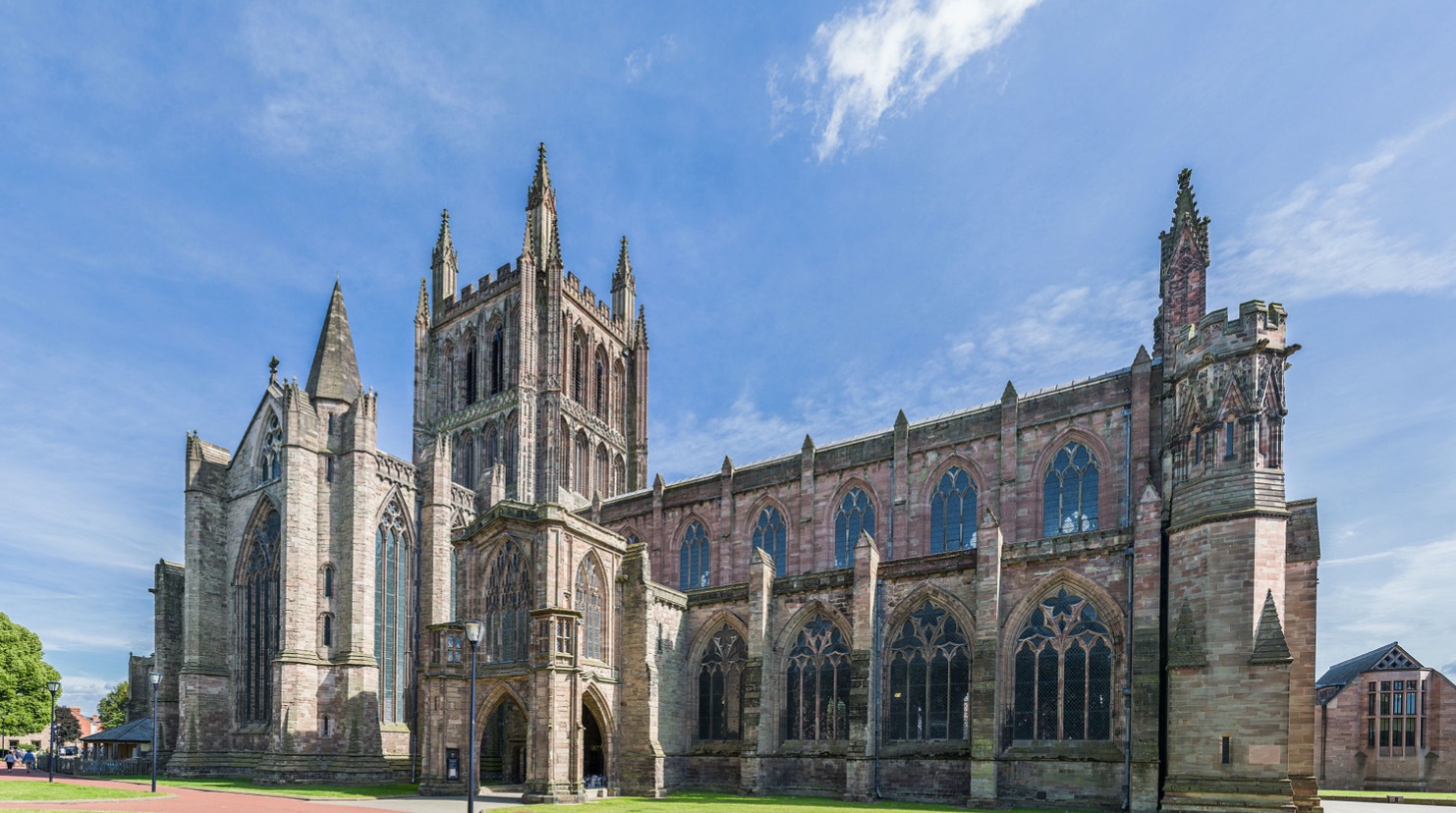
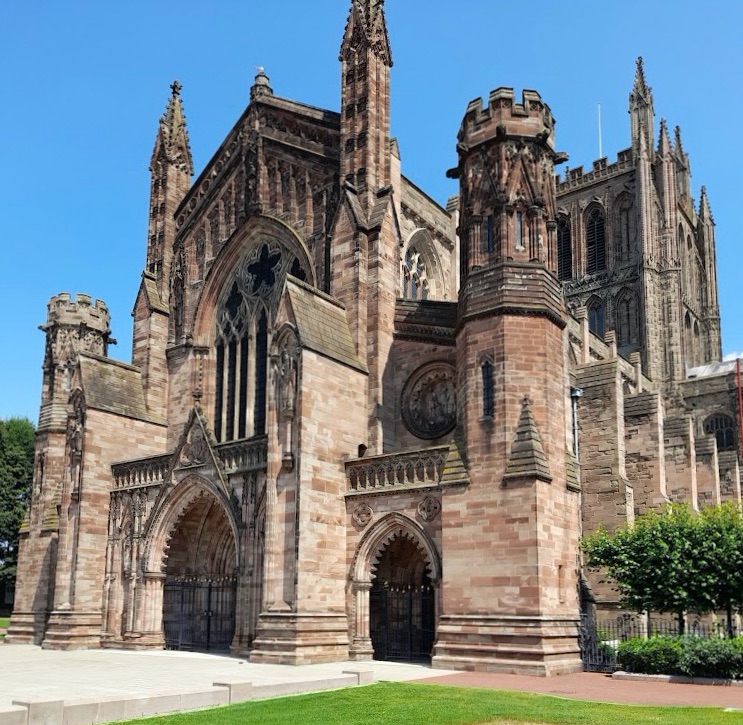 West Elevation |
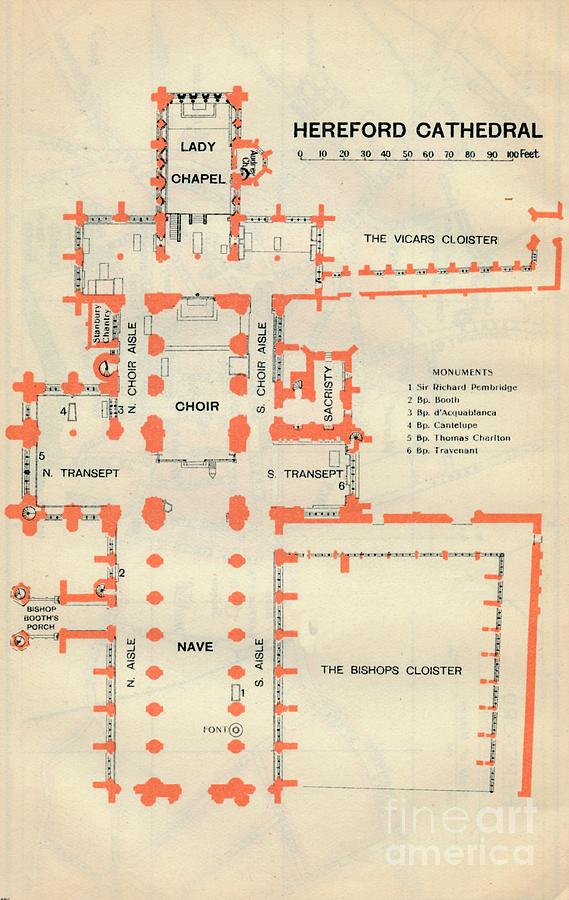 |
|
There has been a religious building
on this site since before the 8th century or maybe
earlier. From the year 680 Hereford became
the Diocesan home of the Bishop.
The Cathedral is dedicated to two
Saints - St Mary the Virgin and St Ethelbert the King,
who was beheaded in 794 by Offa King of Mercia. His
body was brought to the church site and buried there.
It later became a place of Pilgrimage to visit due to
several alleged miracles that had happened there.
The first cathedral church was
destroyed in 1056 by a band of Welsh & Irish
mercenaries. The Cathedral then remained in ruins
until 1079 (after the 1066 Norman invasion and
occupation) when reconstruction commenced. The
restoration was finally completed in 1148.
During the following 5 centuries
several major alterations were made to the fabric and
layout including the addition of a crypt in the Lady
Chapel.
Another 19th century restoration designed by George Gilbert Scott a renowned church architect was actually reopened in 1863. 1786 saw the disastrous collapse of
the West Tower. Architect James Wyatt was commissioned
for the rebuild but his design was not viewed as
popular. His west elevation was known as Wyatt's
folly. The current version of the west front was
designed by Oldrid Scott and finally completed in 1908
|
|
The first
heating equipment to be installed in the Cathedral
was in 1867 when four largest size Gurney type A
stoves were fitted to warm the building. The stoves
were sited in North Aisle; South Aisle; South East
Transept and South Transept. The tender of local
firm Messrs Bennett & Brown for £240.00 was
accepted by the Dean & Chapter (see note in
Chapter Act book). Bennett & Brown were agents
for Gurney stoves.
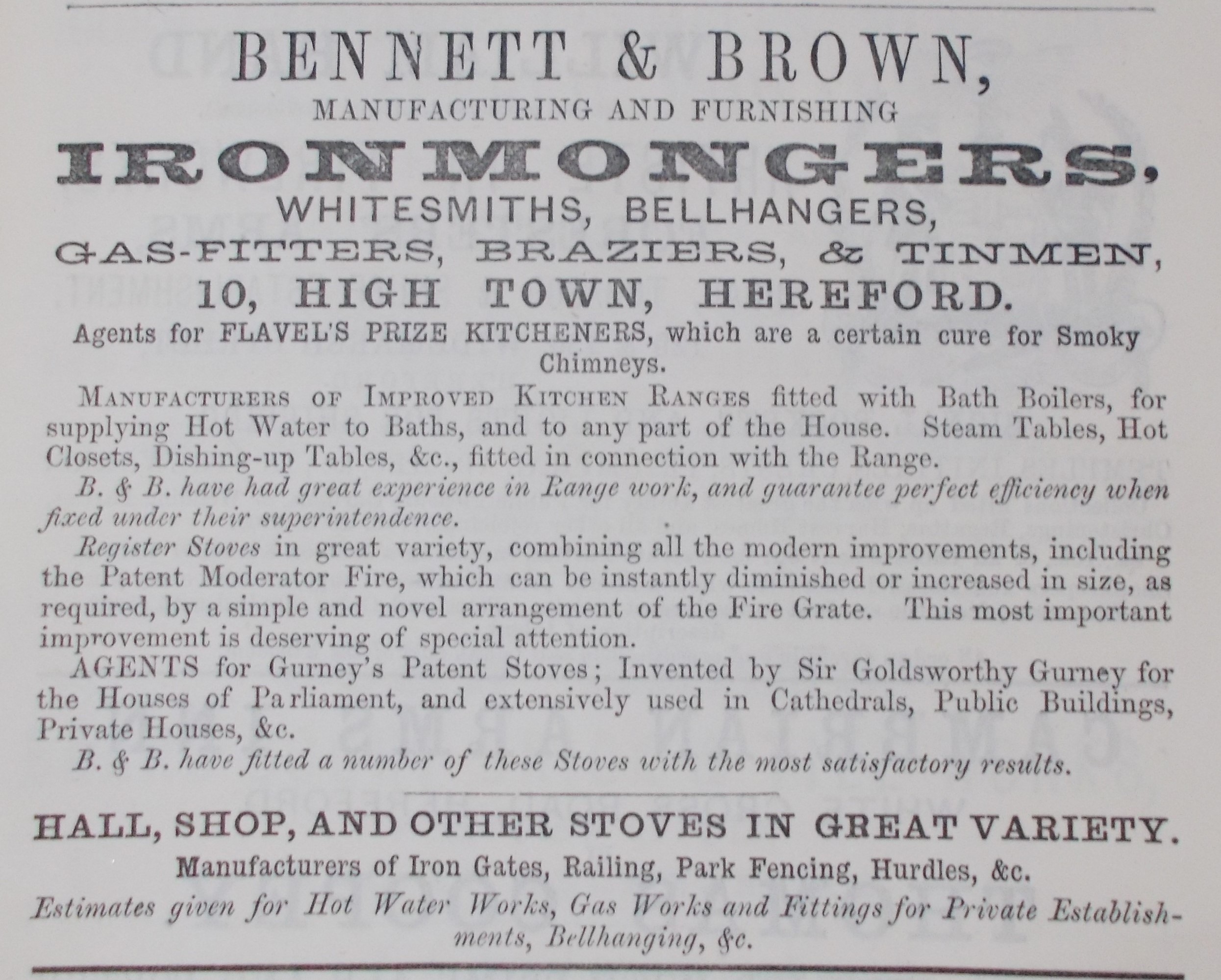 Littlebury's directory 1867 In 1871 an
advertisement was inserted in local newspapers
inviting tenders for supplying coke to fire the
stoves. The records in the Chapter Act Books (see
later) show how the cost of anthracite coal
escalated over the time period that the stoves were
fired with solid fuel.
One must assume
that underheating in some areas of the Cathedral
continued to cause concern so in 1931 a second-hand
Gurney was purchased from St Asaph's Catherdral in
North Wales for £25.00. This stove was installed and
fixed in the North Transept to provide heating to
the Chained Library & Lady
Chapel.
In 1989 it was decided to convert all of the stoves to gas firing, the work was carried out by British Gas, West Midlands. The local building firm of Capps & Capps doing the necessary trench works. |
| The Gurney stoves
have now given over 150 years of service in warming
this large cathedral building with its Grade 1 Listed
status, but now sadly they are begining to show signs
of age with some fins cracking and fire brick linings
needing repair. The stove was originally designed to sit in a shallow base trough that was filled with water which was heated by the stove that was intended to evaporate and moisten the atmosphere inside the heated building. |
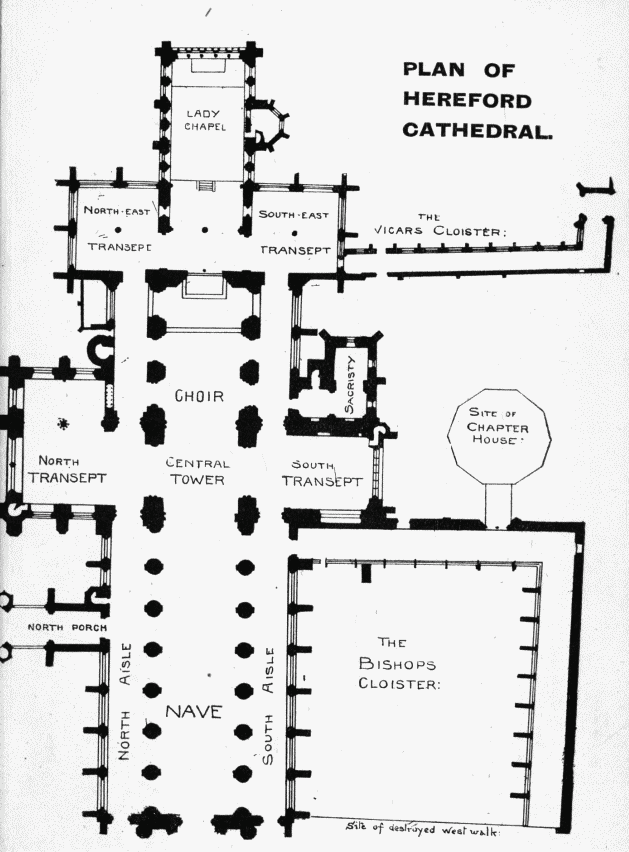
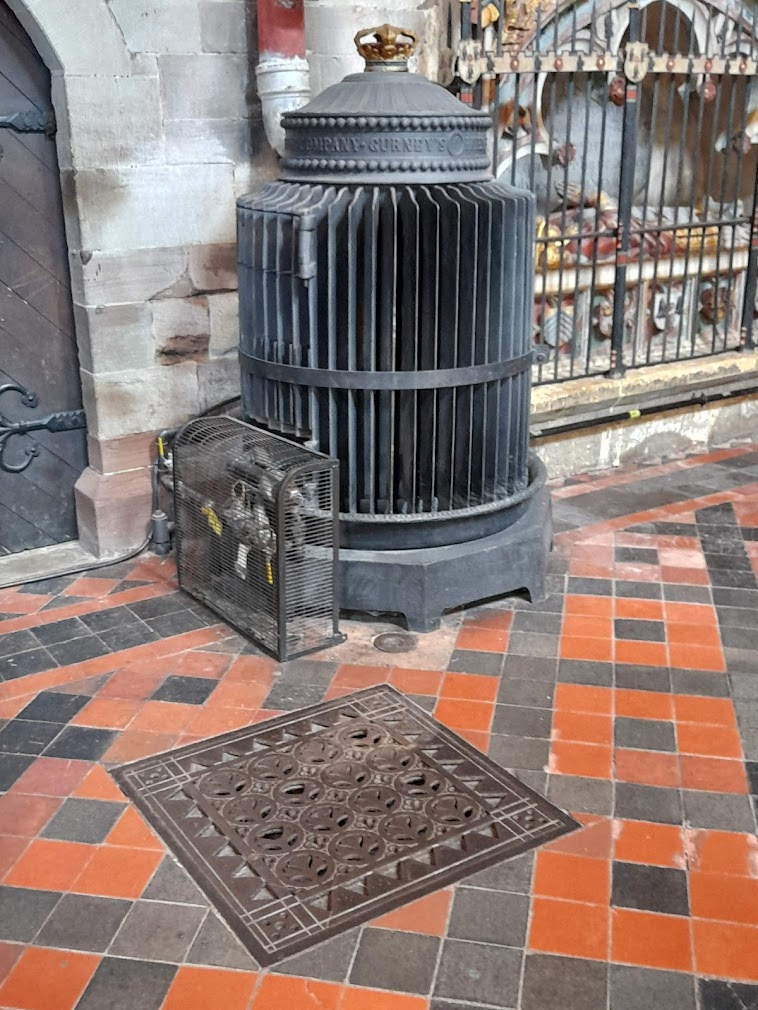 NORTH AISLE |
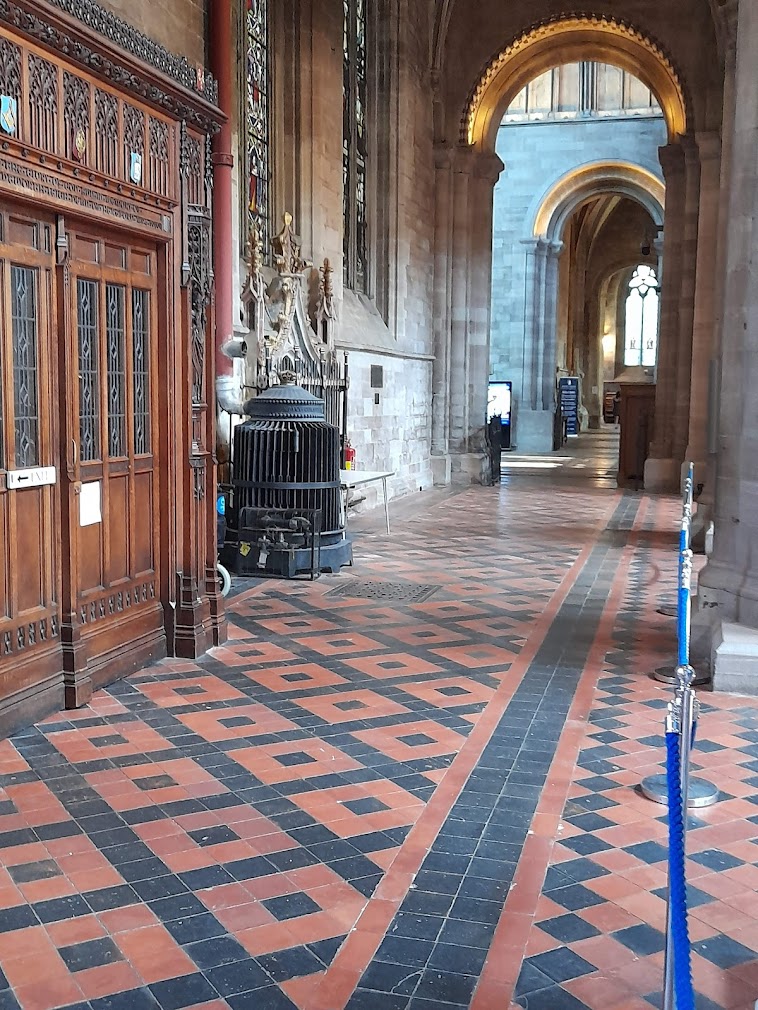 NORTH AISLE north porch |
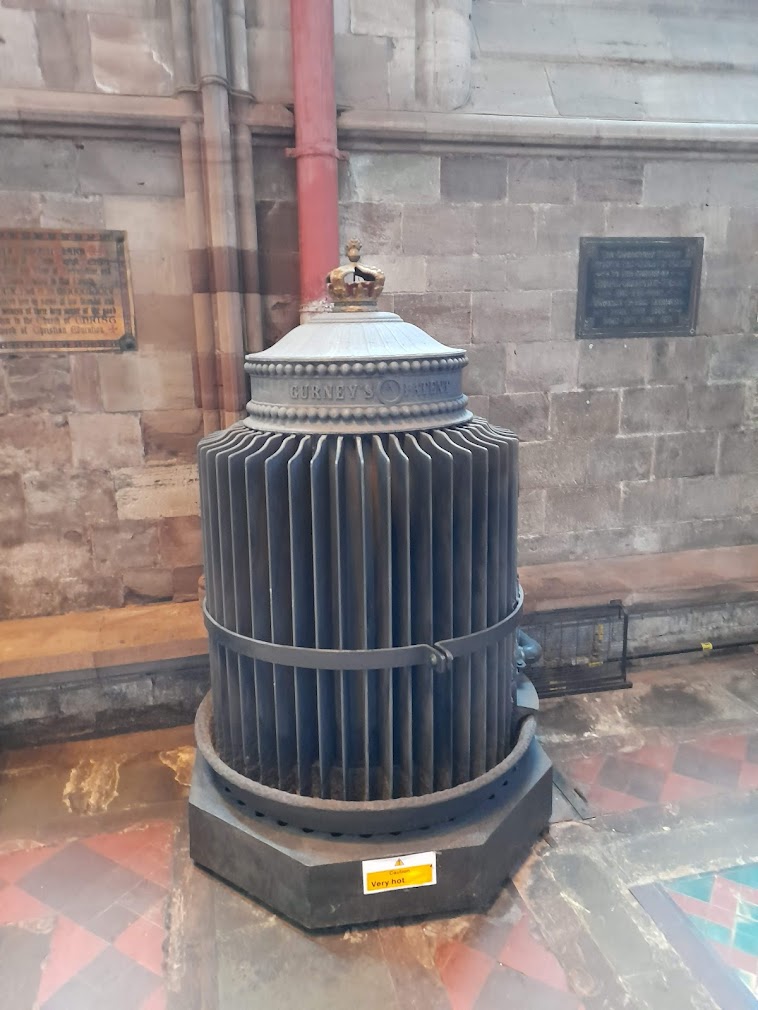 NORTH TRANSEPT |
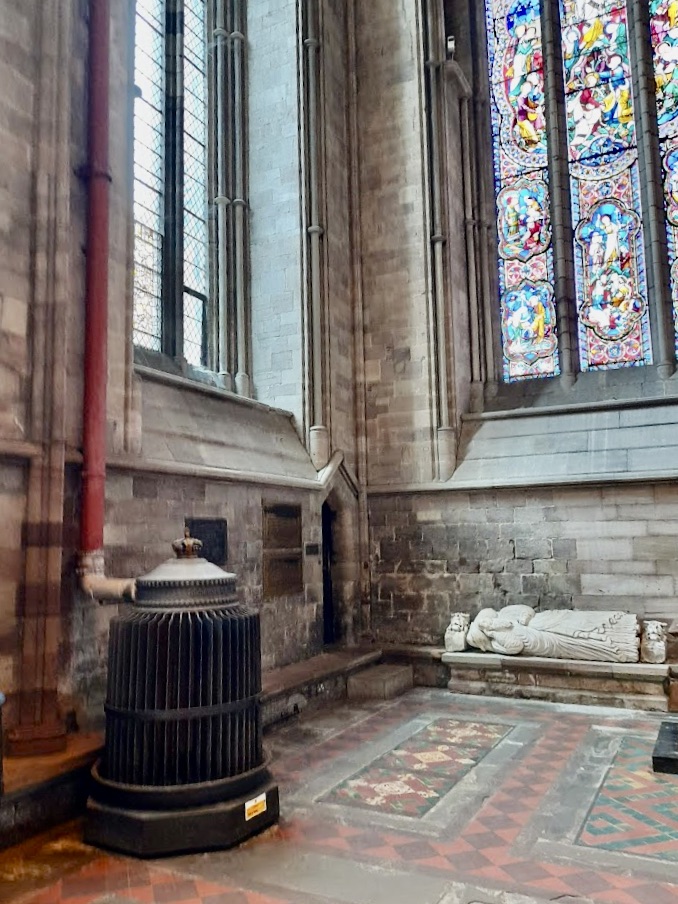 NORTH TRANSEPT |
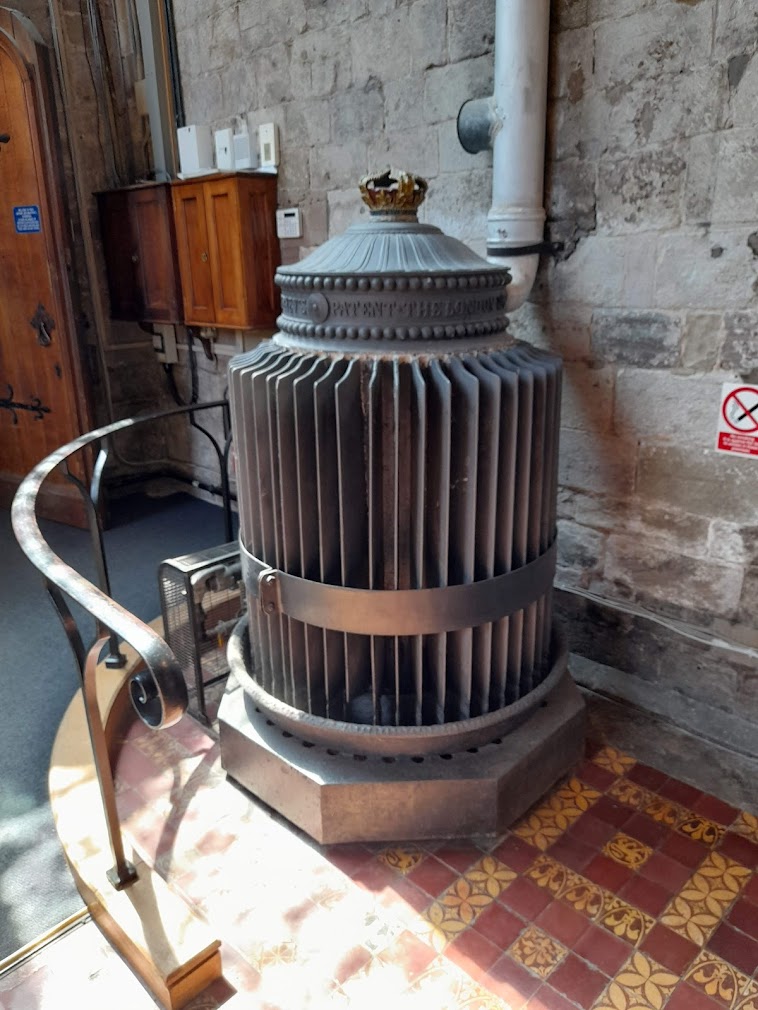 SOUTH EAST TRANSEPT |
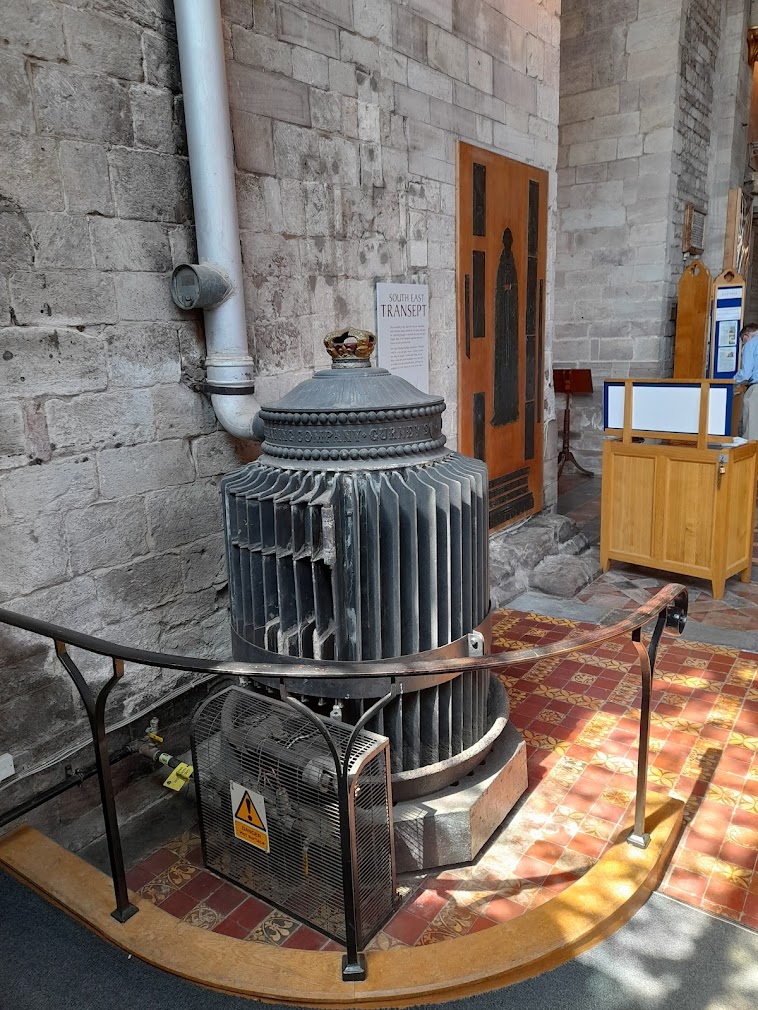 SOUTH EAST TRANSEPT |
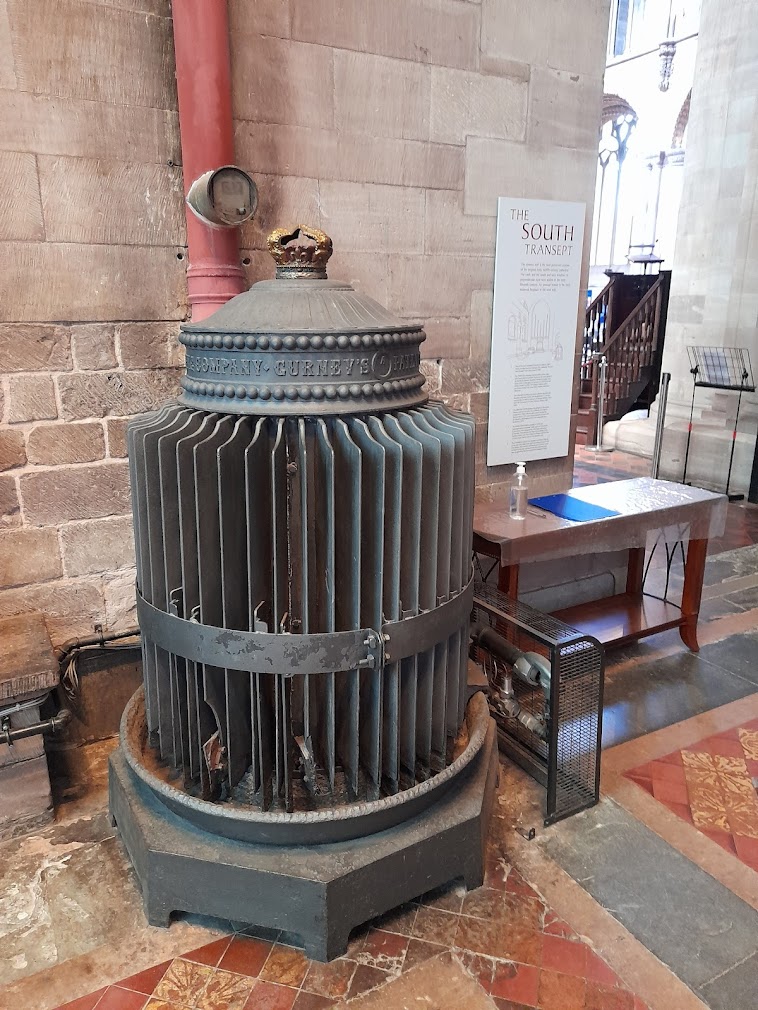 SOUTH TRANSEPT |
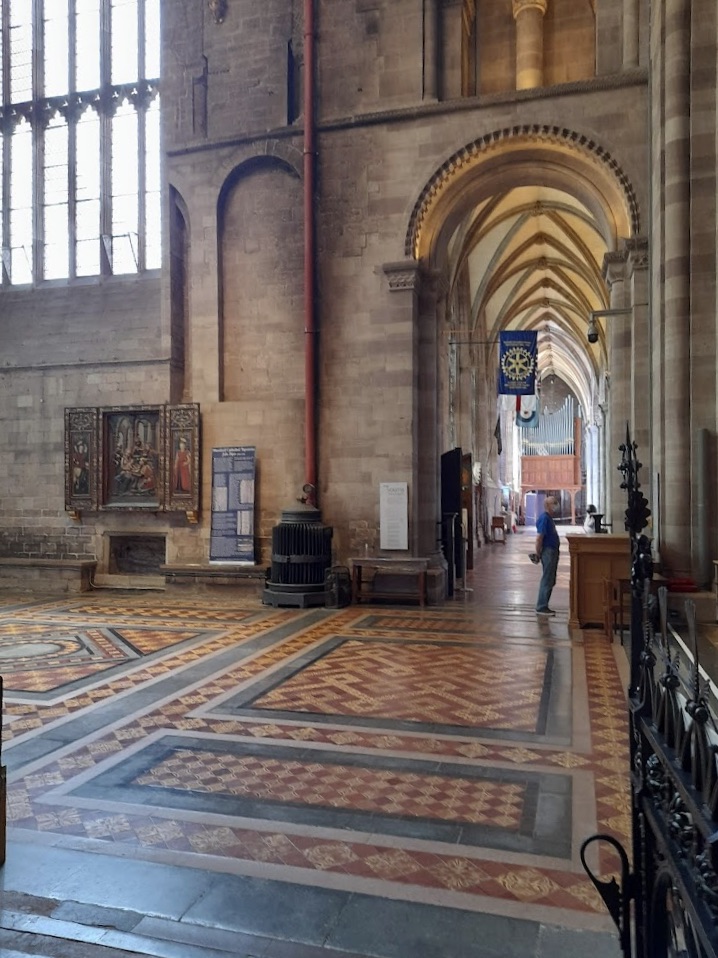 SOUTH TRANSEPT |
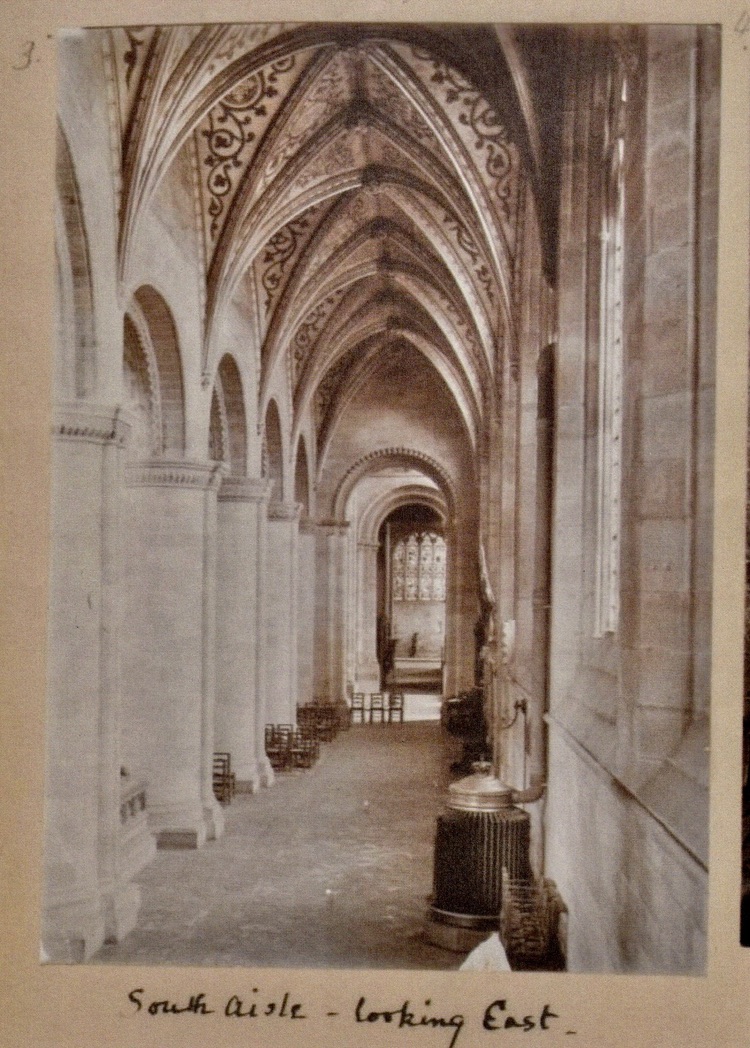 Ref: B 5 Page 216 - copyright Hereford Cathedral |
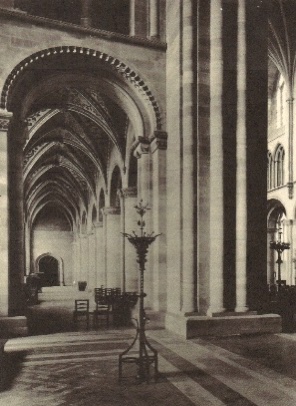 South aisle looking west |
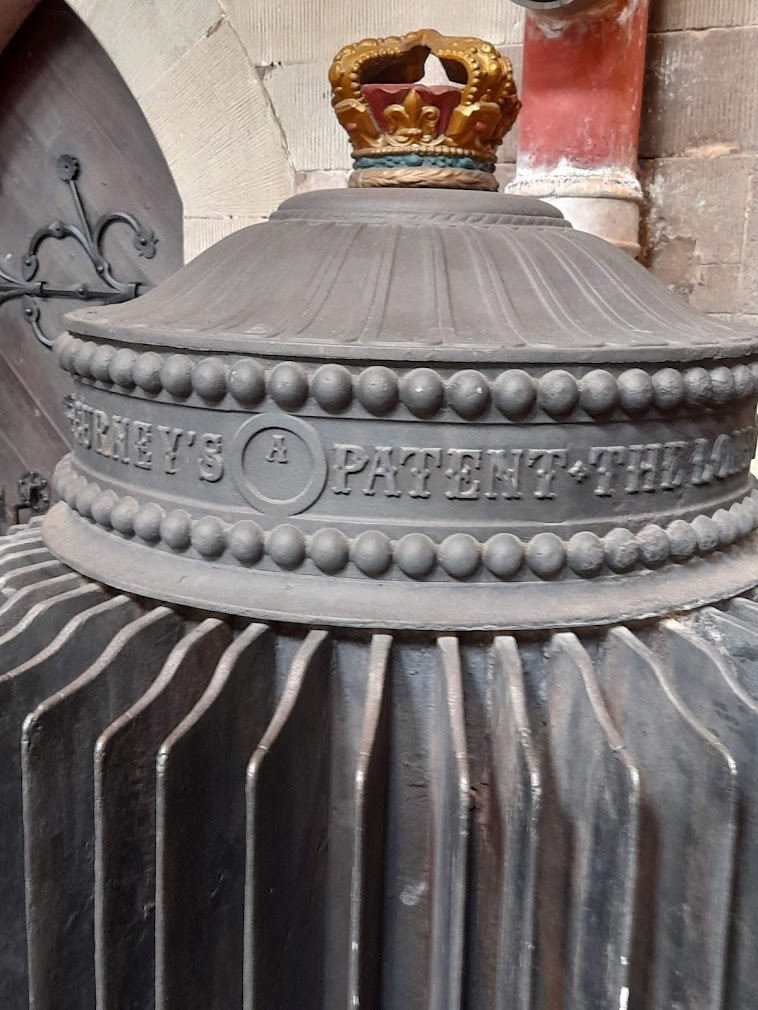 |
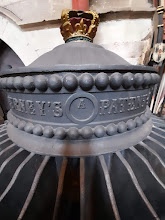 |
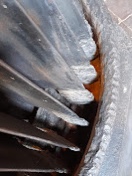 |
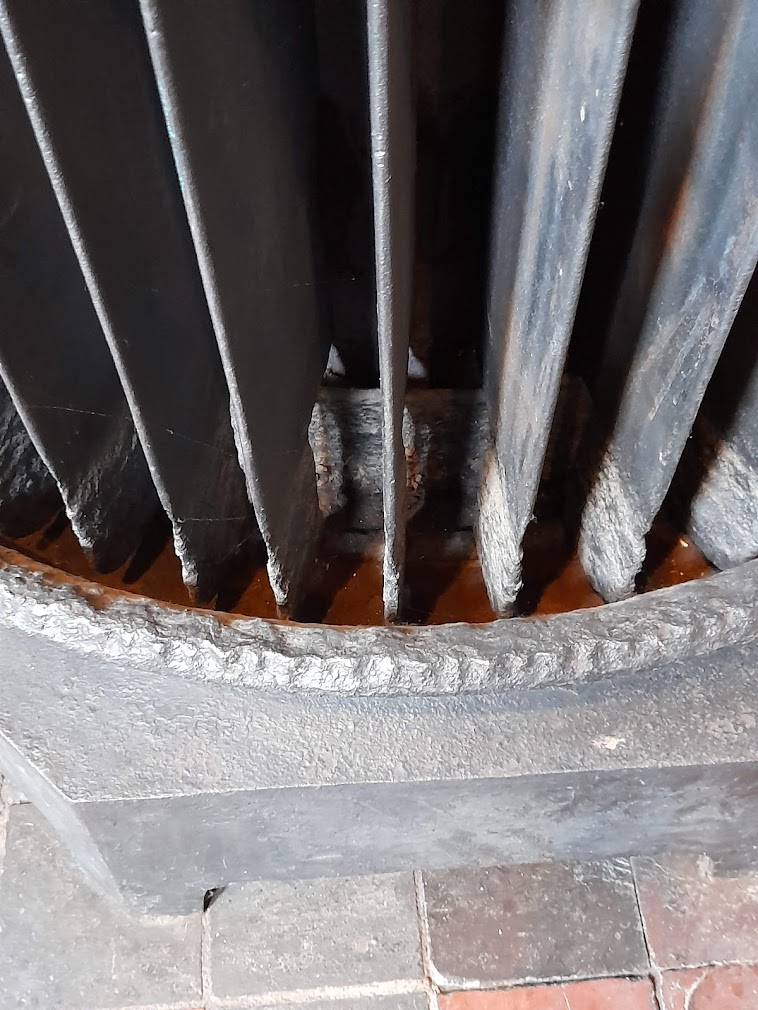 |
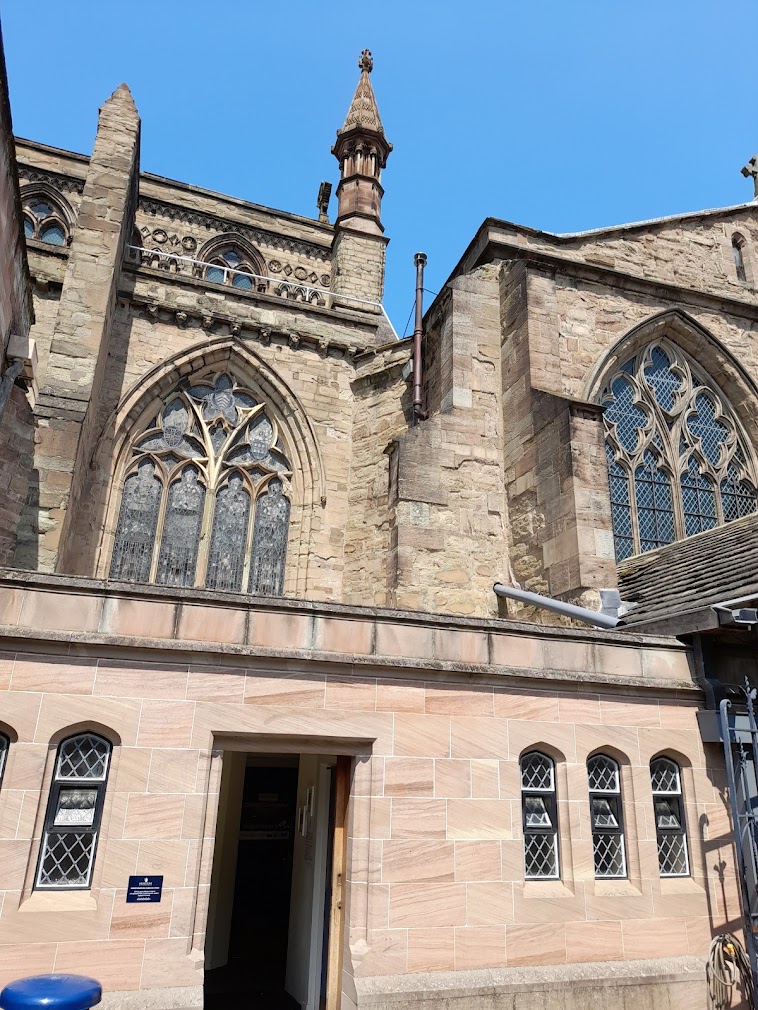 SOUTH EAST TRANSEPT |
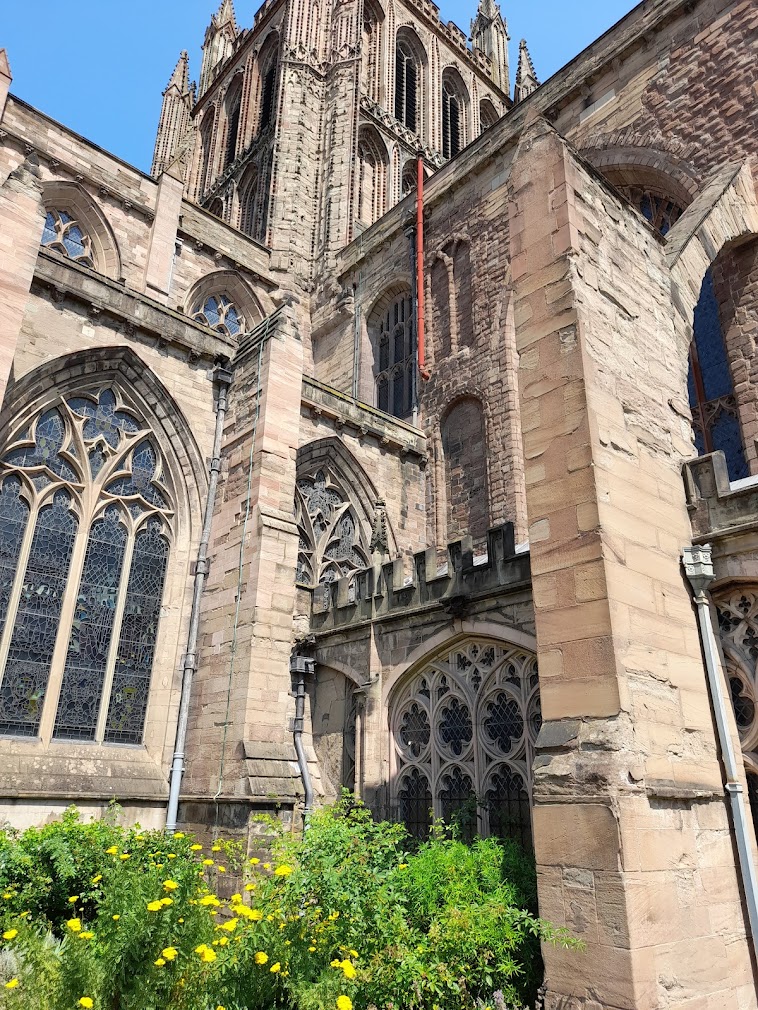 SOUTH TRANSEPT |
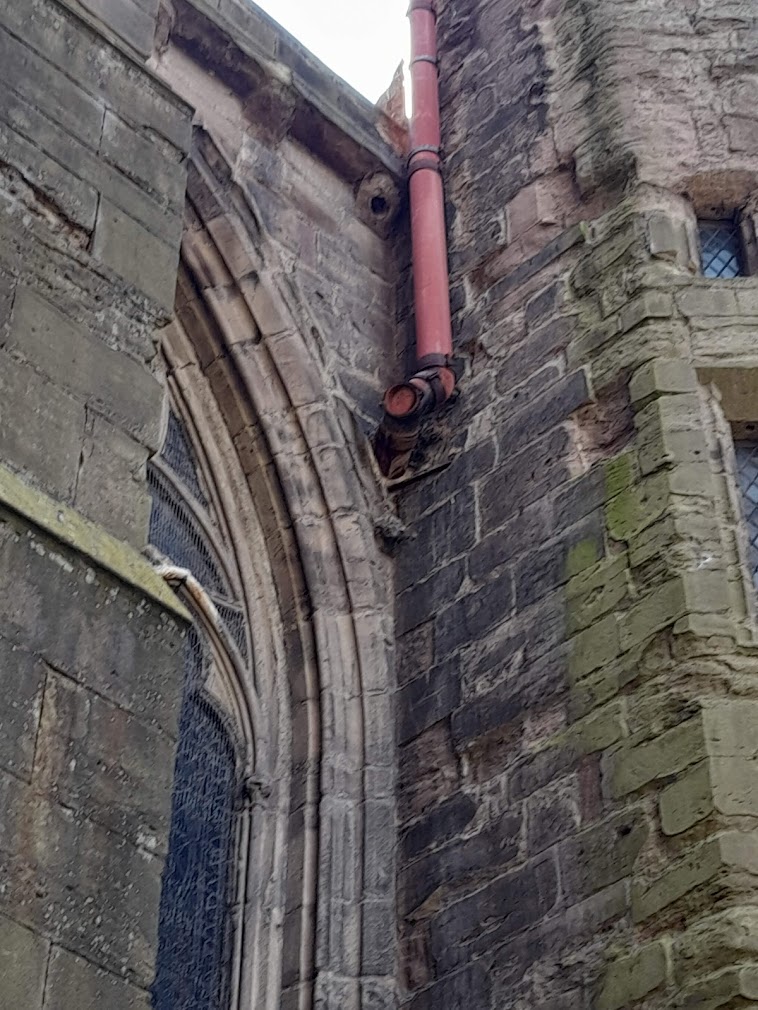 NORTH EAST TRANSEPT |
| The following extracts are from pages in the Chapter books that relate to items referring to church proceedings discussing heating of the Cathedral; purchasing the Gurney stoves; suppliers and cost of anthracite coal; problems with heating; repairs to the stoves; purchasing another stove. |
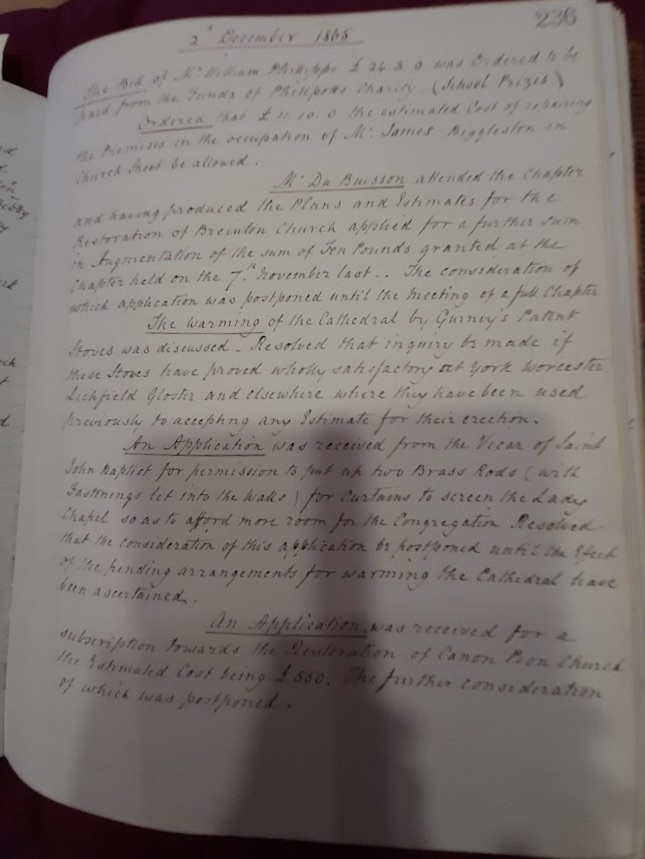 |
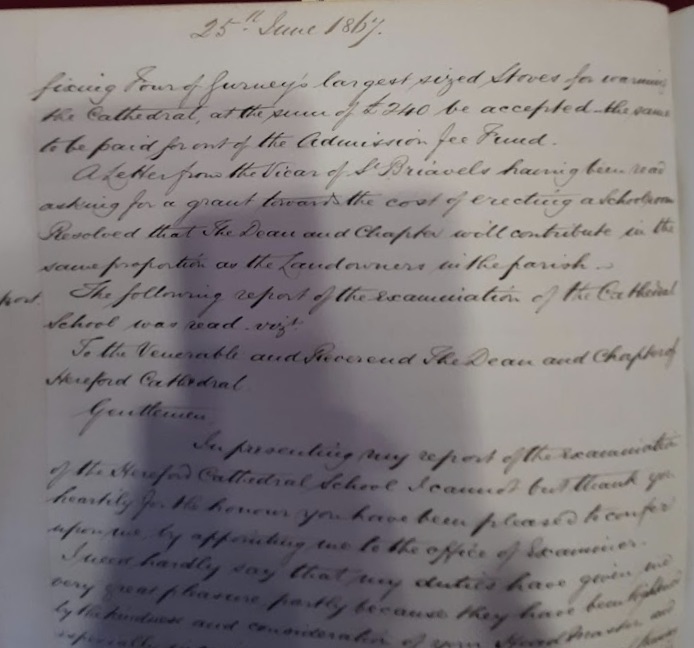 25th July 1867 The tender of Messrs Bennett & Brown for supplying and fixing four of Gurney's largest sized stoves for warming the Cathedral at the sum of £240 be accepted. The sum to be paid from the admission fund |
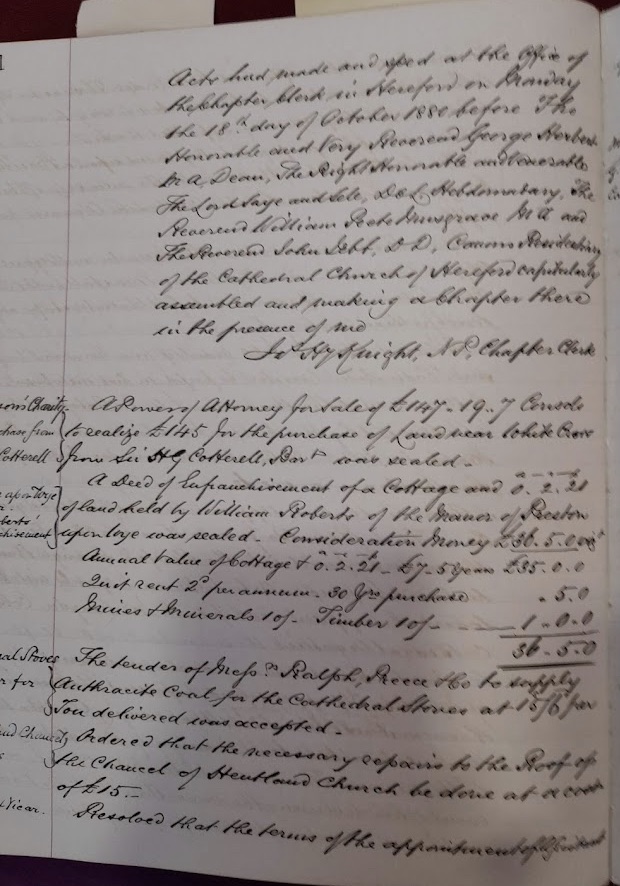 |
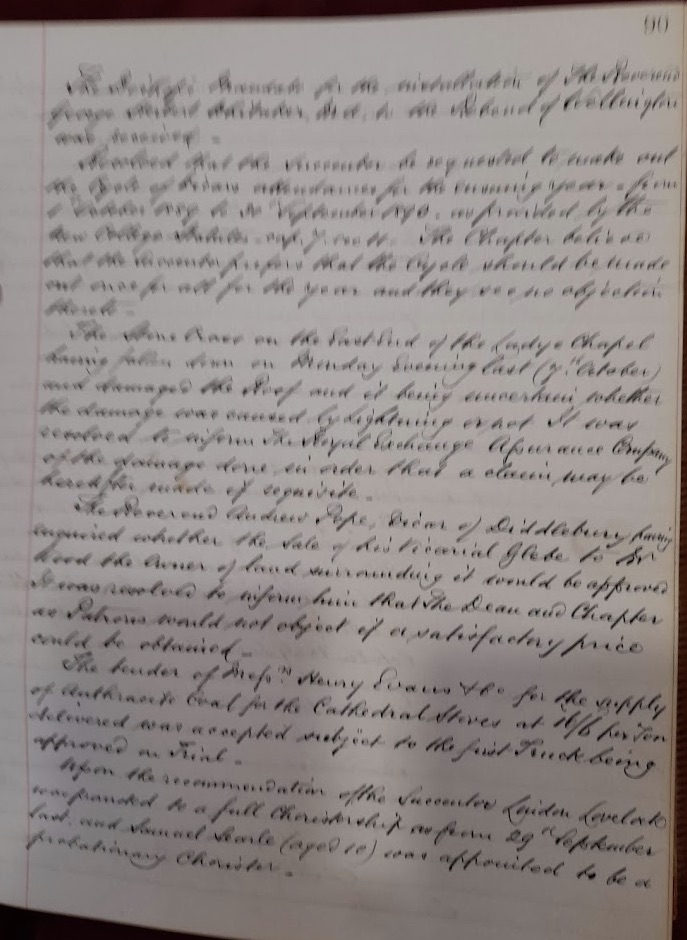 |
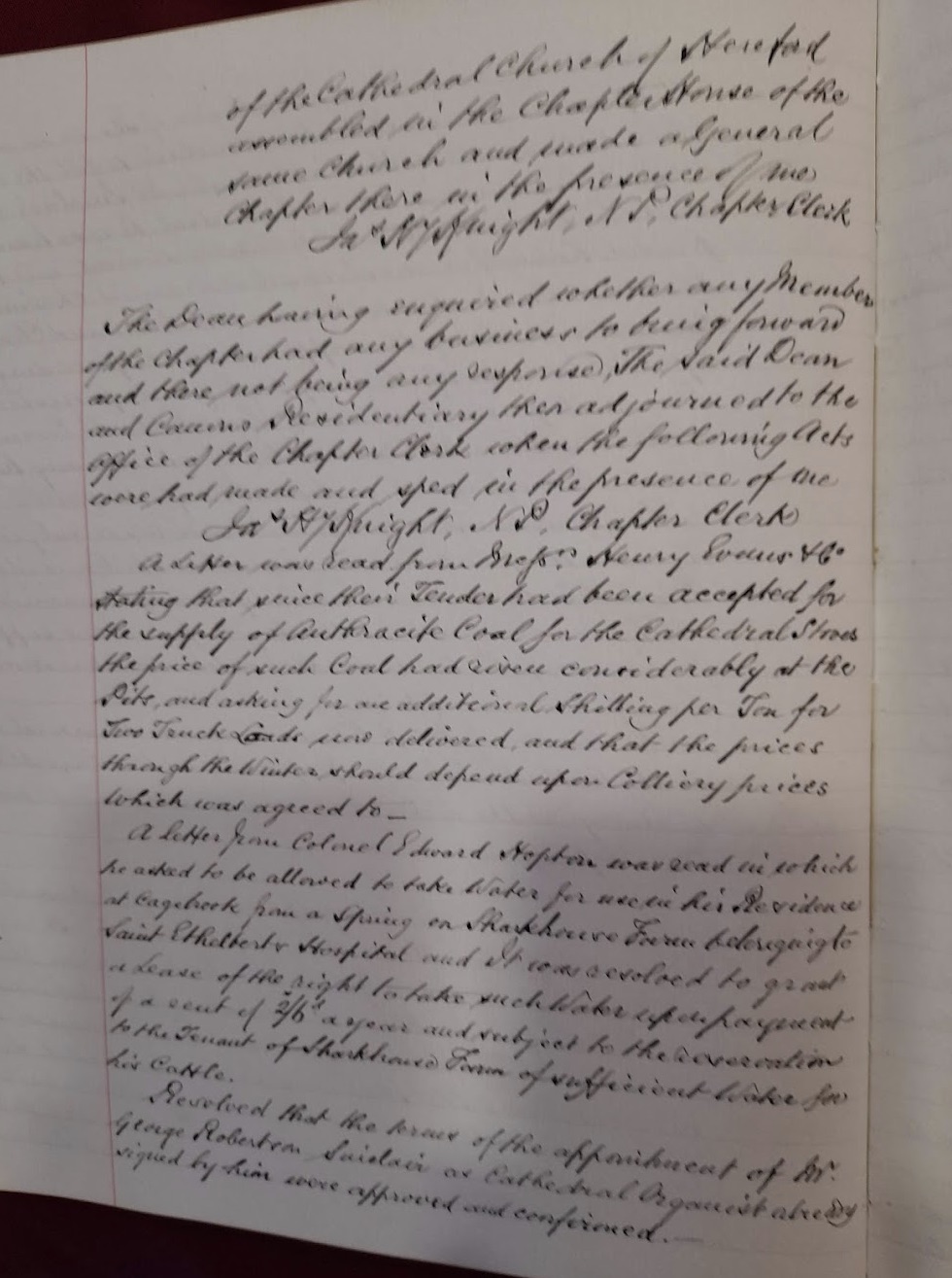 |
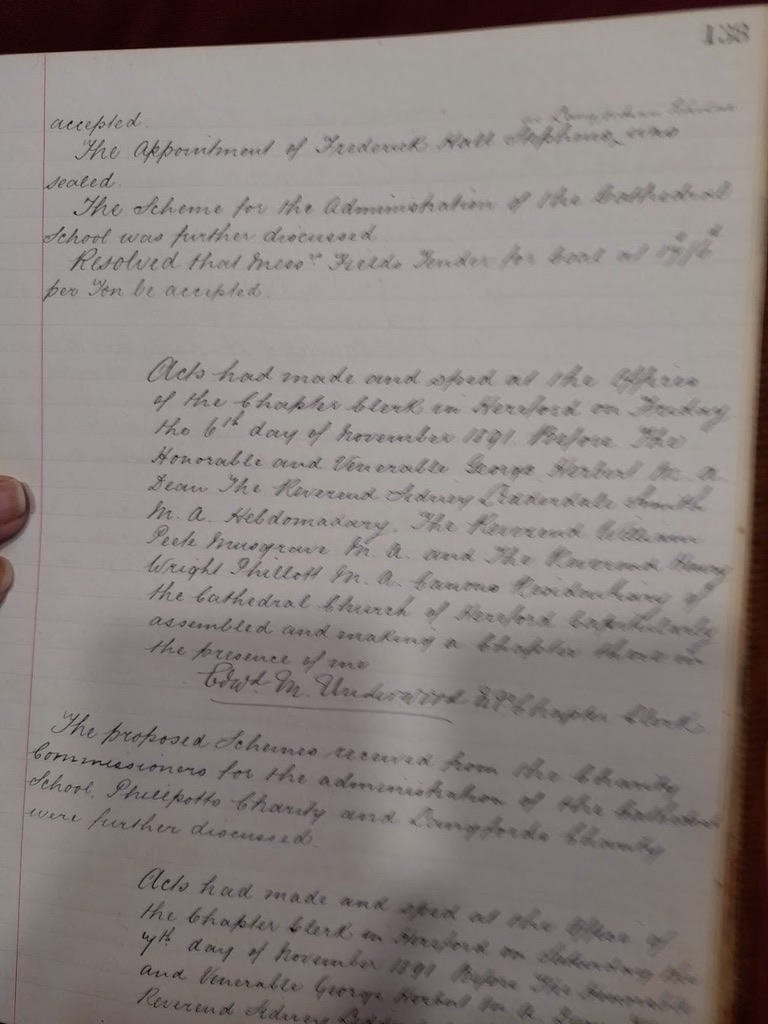 |
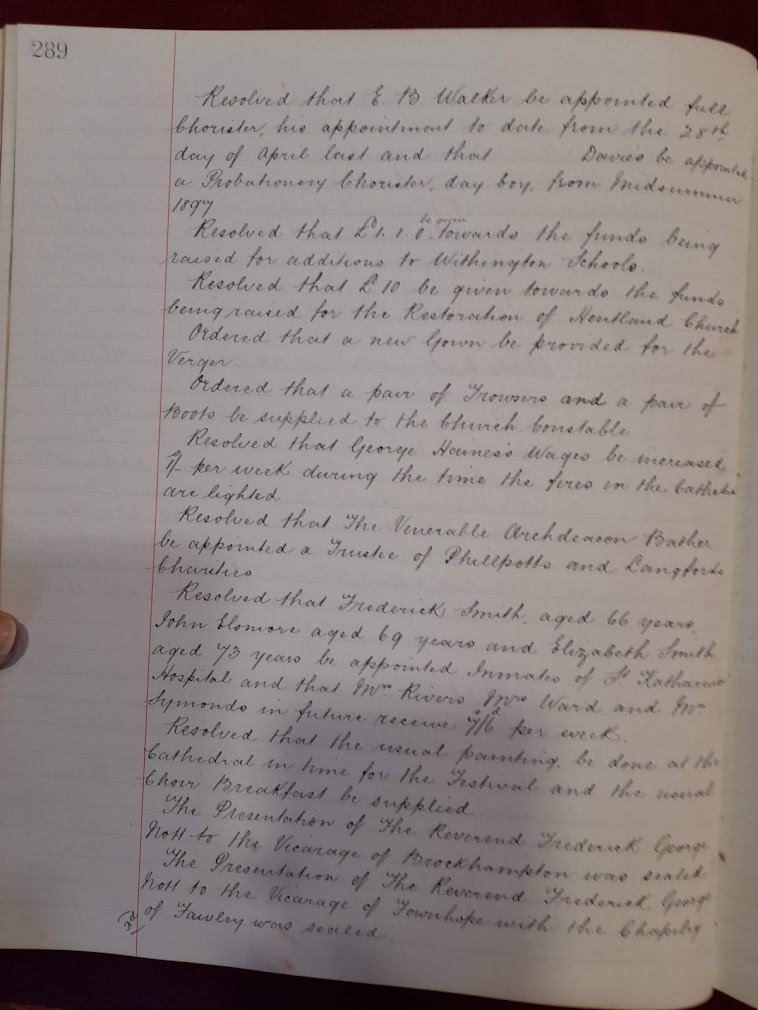 |
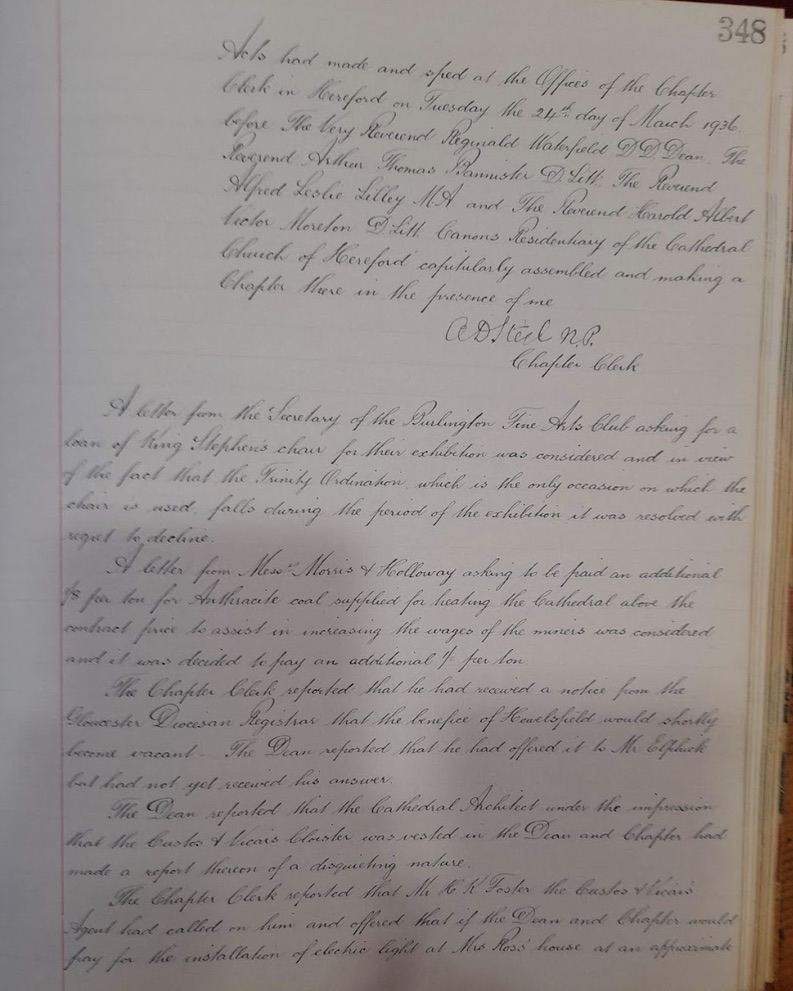 |
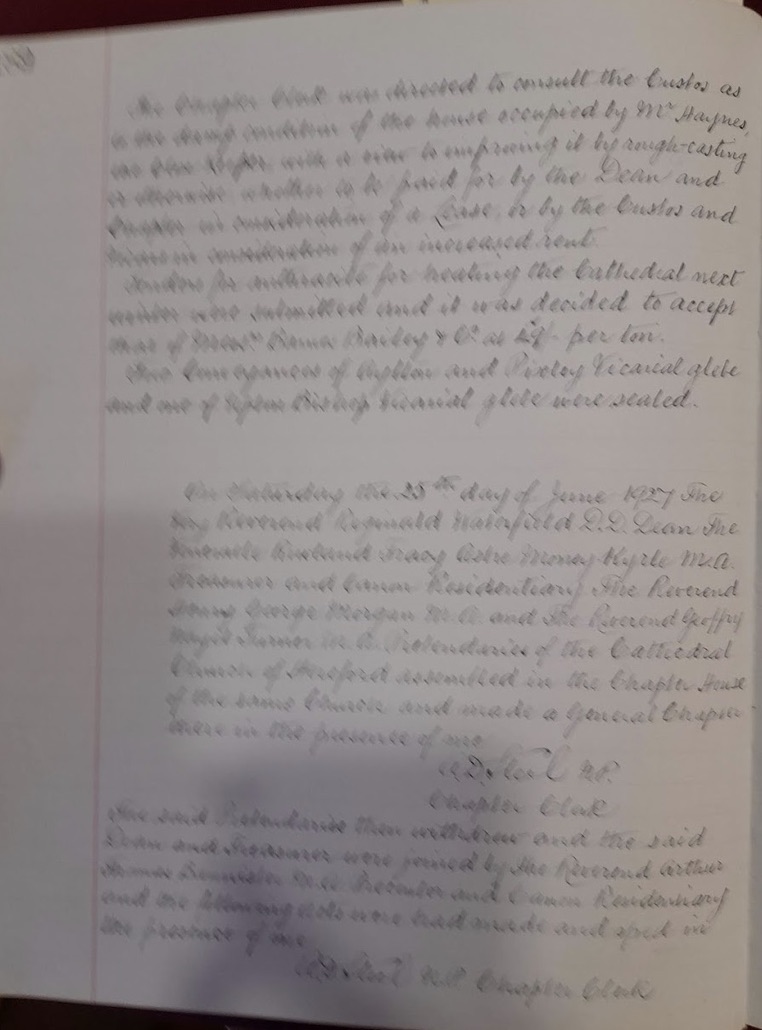 |
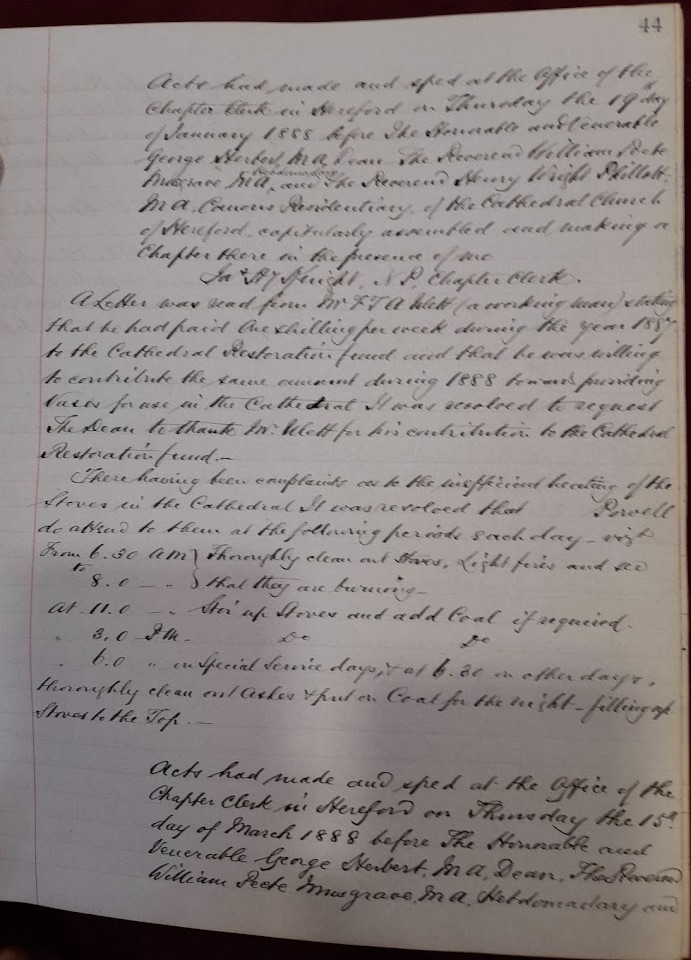 |
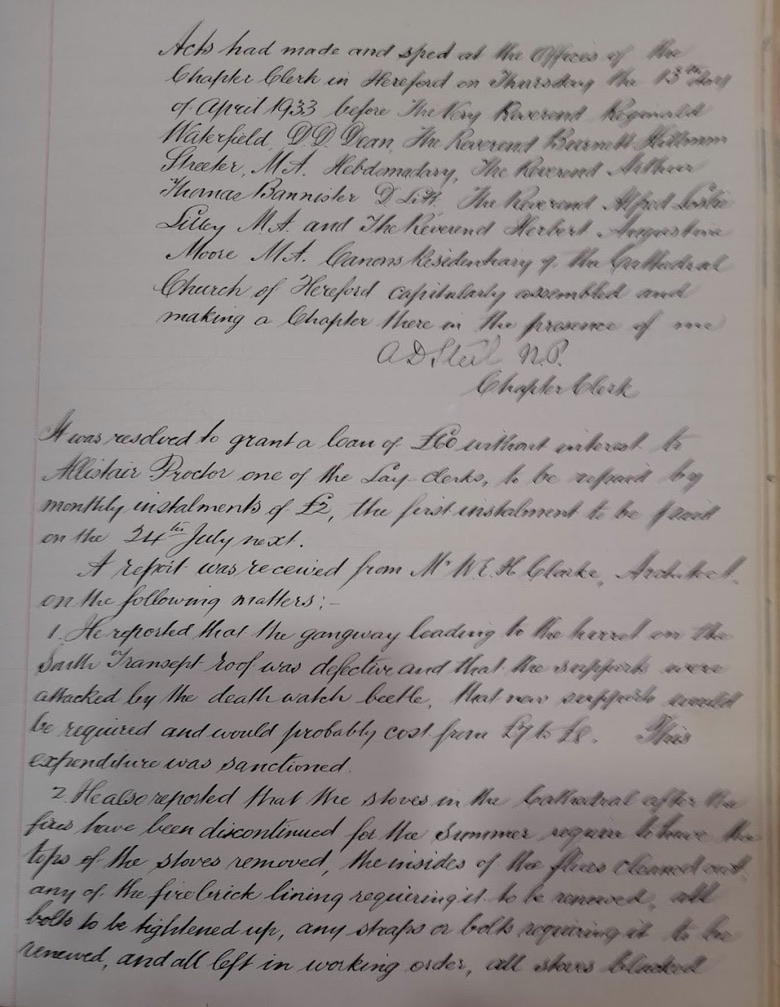 |
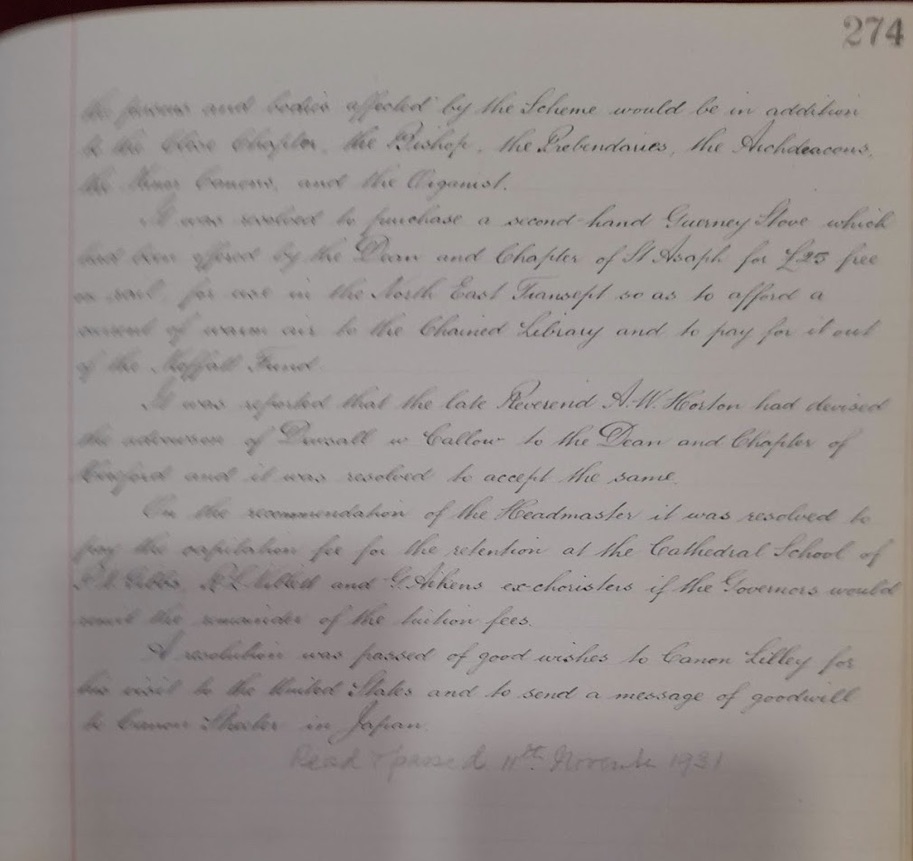 It was resolved to purchase a second hand Gurney stove which has been offered by the Dean and Chapter of St Asaph for £25 free on rail, for use in the North East Transept so as to afford a current of warm air to the Chained Library, and to pay for it out of the Koffall Fund. |
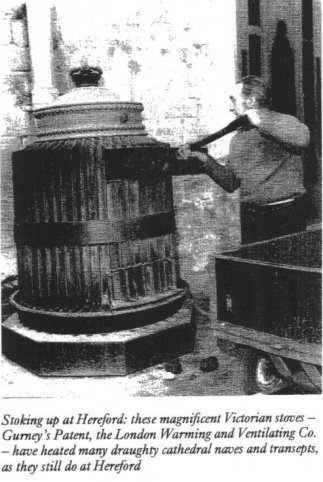 |
A poignant fact that concerns the stokers who attended the stoves through the years making sure they were supplied with sufficient fuel during every heating season from 1871 up until their conversion to gas firing in 1989, was that they had earned the right to be buried in the grounds of the Cathedral. Their grave
markers can be seen in The Bishops Cloister
|